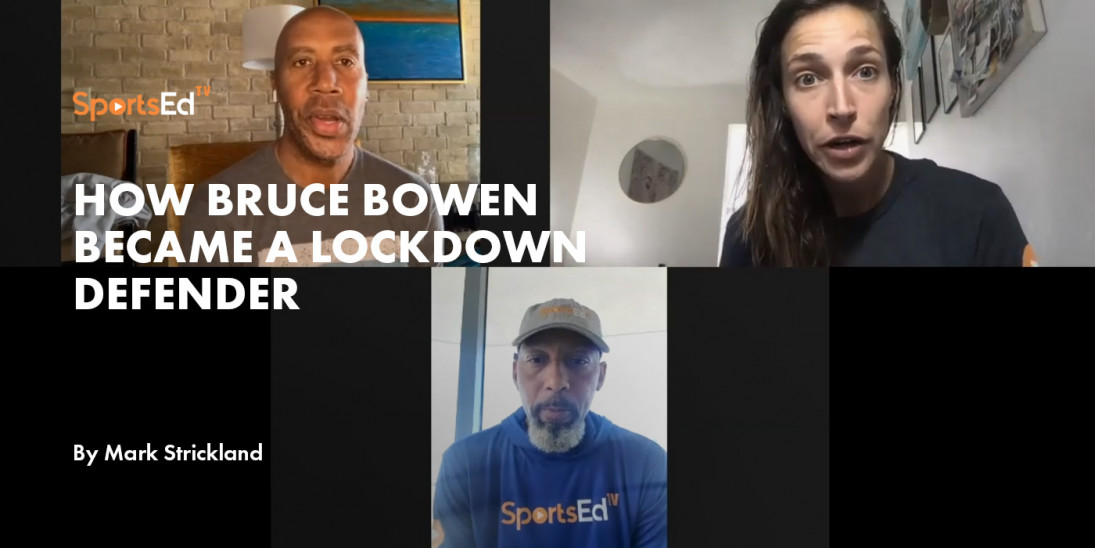Basketball
Welcome and thanks for visiting...

5 Steps To Learning & Teaching Defense In Basketball

Defense is an easily explained concept to new basketball players, but activating a defensive presence in a game takes a full understanding of the skills, movements, and knowledge involved. In the game of basketball, defense is a combination of strength, quickness, body control, and basketball IQ. Individual defense is a skill that every basketball player must master in order to excel as a member of the team and, more so, excel in the team defense.
In this blog, we’re going to break down how to easily teach and explain the basic basketball individual defensive stance, concepts, and movement to a group of new players. By the end, we’ll add a drill with an opponent to combine all of the knowledge and skills learned in this defensive basketball plan.
1) Understanding Proper Defensive Stance in basketball
The first thing you want to do with your group is to explain the proper defensive stance in a stationary manner. Take time to explain why each part of a proper defensive stance is important. This is the first step to understanding the defense. Keep repeating these messages throughout drills and practices over time.
A proper defensive stance is defined as follows:
- Feet shoulder width apart - for easy lateral movement.
- Knees bent in a balanced stance - for better body control.
- The butt is down, while the chest stays upright toward the opponent - a low stance is a quicker, more stable stance.
- Hands up and active - to interrupt passing and shooting lanes.
- Slide, not cross-step, in the direction of your opponent - to ensure you cover ground as fast as your opponent can.
2) Move &; Improve Your Defensive Stance
Once we’ve gone over the understanding of the defensive stance and why we hold the taught position on defense, the next step is addressing the defensive stance in motion. Holding the defensive stance in motion is physically more challenging than stationary, so we need a drill that helps our players maintain and improve their proper defensive posture.
The only thing that changes in this drill is the motion, so it’s important to keep reiterating the reasons why we hold the proper defensive stance in the first place. Be sure to take this drill low and slow and focus on the fundamentals of the defensive stance. We are not going for speed. This drill will surely give your players the opportunity to gain strength in their defensive stance and continue to build good defensive habits.
3) Adding Movement With Defensive Slides
A staple in a basketball player’s practice career, it’s time to introduce the defensive slide. While we weren’t implementing speed into either of the previous drills, here is where we begin to mimic the common defensive motions we see when guarding a player in a game. Again, as you level up your drills, you may see your players lose some of the foundations we already built. Emphasize fundamentals and ensure players are effectively sliding in their defensive stance and not cross-stepping.
4) Introducing Change of Direction
Now that we are moving laterally in a set defensive stance position, we’ll introduce a drill that plays with a change of direction while on defense. The slide, backpedal, and square drill are drills that should be completed not only with efficiency in the defensive position but also with speed, which was lightly introduced in the last drill. Moving at game speed while doing this drill will teach players that playing defense in a game is not just a side-to-side effort, but something that requires sprinting to the ball, backpedaling with your hands in position on top of the lateral defensive slides.
5) Adding Offense With The Mirror Drill
Now that we’ve addressed all the teaching points of proper defensive stance in basketball as an individual, it’s time to add an offensive player with a ball. First, the offense will remain stationary as the defense follows the ball with their hands, and then we will move this drill into a moving defensive slide pattern. By now, you should be able to recognize your players actively implementing the defensive fundamentals you have previously applied in your teaching and drills. The only addition we make is adding on the conditioning. It’s important for players at any age to defend when they are tired, so doing this drill for time and reps is recommended.
*BONUS * How to close out on defense
A closeout in basketball is when a defensive player sprints up to an offensive player with the ball and closes the gap between the two to ensure the offense doesn’t get a shot up or drive to the basket. This skill is the perfect advancement after implementing basic individual defensive principles.








